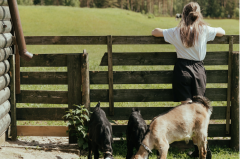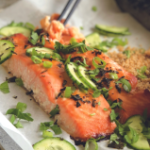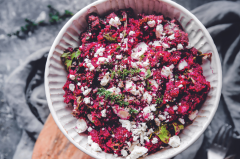A retro lifestyle based on providing for our own practical needs, homesteading focuses on activities like growing food and producing our own energy and household products. With food, fuel, power bills and more on the rise, it’s a good time to get on board.
While associated with the back-to-the-land movement, elements of homesteading can be practised almost anywhere, including in the city. Benefits include reduced costs, connection to nature, traditional knowledge and our own creativity and initiative, plus a greater sense of security. It’s also friendlier on the environment — items made at home accrue fewer food miles and contribute fewer pollutants.
In reality, homesteading occurs on a spectrum. It’s impossible to be fully self-sufficient. However, providing for many of our own needs can make a difference and generate joy and satisfaction.
Getting started
Homesteading requires time, energy, knowledge, skills and practice. Begin with something you enjoy. To build skills, explore the range of courses, DIY books, blogs, vlogs, niche magazines and more on subjects like permaculture, herbal medicine, Indigenous crafts, building and so on — whatever appeals to you. Also source help from the older generation and those following the lifestyle.
As DIY requires various tools and materials, free up workspace and storage at home for your activities. But before you fork out on stuff, have a plan.
Nevin Sweeney, founder of the Under the Choko Tree sustainable living blog and a former industrial chemist and president of Permaculture Sydney West, says having a plan will help you maximise your time, resources and money. Start by measuring your consumption. “What you don’t measure you don’t control,” he says.
Map out your action plan with a method that suits you, whether it’s a notebook, drawing, spreadsheet or regular strategy meeting. Roman Spur, a sustainable design engineer who shares homesteading tips via his Spurtopia blog and regular workshops, started out with a diagram. Sketching his Fernvale property in south-east Queensland 60 kilometres west of Brisbane, he created a vision of how he wanted to live in a few years’ time then developed goals to realise that. However, don’t try to achieve everything at once, he says. “It would be overwhelming. Start slowly.”
Growing food
Sweeney and his wife grow 80 per cent of their vegetables, 100 per cent of herbs, 90 per cent of fruit and 50 per cent of the eggs they consume on a mere 600 square metre block in suburban St Clair in Western Sydney. Central to having an ongoing food supply on a small block, he says, is utilising whatever space you have, including shady and vertical areas, replenishing the soil and succession planting — the staggered sowing of seeds. Sweeney has 14 veggie patches and rotates
a tractor around them every two months.
Along with vegetables, herbs, fruit and nut trees, you can grow aquatic plants, native edibles, mushrooms and perennial food plants. Natives and perennials are the least labour intensive. “Our current diet is annual rich, but there’s a whole stack of perennials out there,” he says. Mushrooms can be great for low-lit areas while many leaf crops can grow on two hours of sunlight a day, he says. “It’s a way of growing food in an area otherwise difficult.” Sweeney also grows water chestnuts and other aquatic species within bathtubs.
Sprouts, herbs and microgreens are ideal for those living in units, nutritious and easy to grow. The seeds can be purchased inexpensively from Asian grocers, he says.
“There’s a whole variety of things you can grow indoors.” Another strategy is to grow under lights.
Just as important, reminds Spur, is to actually eat what you grow. Spur and wife Jana also grow grains like amaranth and sorghum and a tropical nut. “We’ve got most of our food demands growing from the garden on the property,” he says.
Chooks, bees, worms, frogs and other helpers
Homesteaders commonly encourage and keep other species for pollination, pest control, fertiliser, soil enhancement and food products like honey and eggs. Sweeney encourages biodiversity and wildlife in his garden with water-filled bathtubs and bird and bat boxes. At Spurtopia Homestead the Spur family keep bees for honey, brewing mead and sweetening homemade lemonade. Last season the Spurs’ seven hives produced over 250 kilograms of honey. The beeswax also comes in handy for making food wraps, candles and lip balm.
Linda Woodrow, author of The Permaculture Home Garden and 470 (a fictional novel imagining what it would be like to live in a climate-change future and the strategies that would be useful), has 12 chickens, a worm farm and Australian native bees on her modest 500 square metre property at Coffs Harbour. The native pollinators produce less honey than the honeybee kind, producing three small cups a year, but don’t suffer from the varroa mite, she says.
Food preservation
Understanding food preservation is essential to prolonging any harvest or excess and squirrelling it away for future use. The Spurs, who grew up in the culture of the Czech Republic and have three young daughters, were fortunate to learn a hands-on self-sufficient lifestyle from their families and say you can preserve food with things you have at home.
The main methods, Spur says, are canning and bottling using heat, brine, salt or sugar, and drying of herbs, legumes, flours and more. “We have all sorts of dried stuff,” Spur says. Their stocks include 40 kilograms of dried beans. Preserved, sealed and stored properly, he says dried and canned food can last a few years. The Spurs simply use old glass jars they sterilise in boiling water.
Making your food into beverages is another way to preserve food. Spur makes his own beer, wine, ginger beer and juices. Any juices the family can’t drink are frozen for later use. But, he says, “in general, it’s always best to eat food fresh.”
Making food products
Homesteaders enjoy making a range of delicious food products from their crops and inexpensive staples like flour and legumes.
Woodrow rises early to make her regular food supplies. This includes sourdough, pitta bread, naan, crackers and yoghurt. “I haven’t bought bread for 15 years,” she volunteers. From her homemade yoghurt, she also produces labneh or yoghurt cheese. Along with saving her money, making her own food products is satisfying and reduces packaging — Woodrow wraps her breads in tea towels. She also concocts her own pasta, hummus from chickpeas cooked in the slow cooker while





